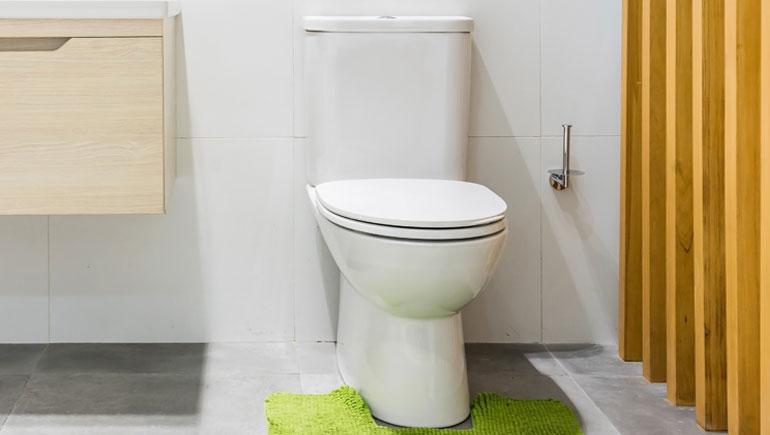In the realm of water conservation, understanding the nuances of toilet water efficiency ratings is crucial. Especially for professionals in the Industry QA sector, this knowledge not only supports sustainability initiatives but also aligns with regulatory compliance and consumer satisfaction. As water becomes an increasingly precious resource, efficient toilets are no longer a luxury but a necessity.
Toilets account for nearly 30% of an average home's indoor water consumption, making them a significant consideration in water conservation efforts. The ability to gauge and understand these ratings can lead to substantial savings, both environmentally and financially. The concept of how much water a dual-flush toilet saves is a great starting point for anyone looking to delve deeper into this area.

What are Toilet Water Efficiency Ratings?
Toilet water efficiency ratings are metrics used to evaluate how much water a toilet uses per flush. These ratings are crucial for manufacturers, retailers, and consumers alike, as they provide a standardized measure of a toilet's water usage. The lower the gallons per flush (GPF), the more efficient the toilet is considered to be.
For instance, a toilet with a 1.28 GPF rating uses significantly less water than older models, which often use 3.5 to 5 GPF. Understanding these ratings helps in choosing products that meet both personal and environmental needs. Moreover, these ratings are often part of broader certification programs like WaterSense, which is a label that identifies water-efficient products that meet specific criteria set by the Environmental Protection Agency (EPA).
Why Efficiency Ratings Matter
The importance of these ratings extends beyond just saving water. For industry professionals, these ratings are pivotal in compliance with local and national regulations. Many regions now have strict guidelines on water usage, particularly in new constructions and renovations. By choosing toilets with higher efficiency ratings, companies can adhere to these regulations more easily.
Furthermore, for the consumer, these ratings translate into lower water bills. A high-efficiency toilet can save a household up to 13,000 gallons of water per year, which equates to significant cost savings over time. This financial benefit is a compelling reason for consumers to demand toilets with better water efficiency ratings.
How to Assess Toilet Water Efficiency
Assessing toilet water efficiency involves understanding the different ratings and certifications available. The most common rating is the GPF, but other factors like the MaP (Maximum Performance) score, which assesses the toilet's ability to remove waste, are also important.
When selecting a toilet, professionals should look for the WaterSense label, which signifies that a toilet uses at least 20% less water than the current federal standard. Its also beneficial to consider dual-flush toilets, which offer two flush options to further optimize water use. If you're interested in learning more, check out what is a dual-flush toilet for in-depth insights.
Industry Trends and Innovations
The plumbing industry is continuously evolving, with new technologies and innovations making toilets more efficient than ever before. This includes advancements in flushing mechanisms, bowl design, and materials that enhance performance while minimizing water use.
Smart toilets, which incorporate sensors and automated flushing, are becoming increasingly popular. These toilets can adjust the amount of water used based on the type of flush needed. Additionally, vacuum-assist and pressure-assisted technologies are being integrated into modern designs to further improve efficiency without compromising performance.
For those interested in the latest trends, exploring efficient toilets for small apartments can provide innovative solutions that cater to space-saving and efficiency needs.
Challenges in Implementation
Despite the clear benefits, implementing high-efficiency toilets poses certain challenges. Cost is a significant barrier, as these toilets can be more expensive initially than traditional models. However, the long-term savings and environmental benefits typically outweigh the upfront costs.
Another challenge is consumer perception. Many people still associate low-flow toilets with poor performance, although modern designs have largely overcome these issues. Education and awareness are key to overcoming this barrier, as consumers need to understand the benefits and advancements in toilet technology.
Conclusion
Understanding toilet water efficiency ratings is essential for making informed decisions that benefit both the environment and the bottom line. For those in the Industry QA sector, this knowledge supports compliance, drives innovation, and meets consumer demand for sustainable solutions.
By prioritizing toilets with efficient water ratings, we contribute to a more sustainable future, ensuring that our water resources are preserved for generations to come. For DIY enthusiasts, turning existing toilets into efficient models is also an option, as outlined in resources like this guide on conserving water.

FAQs
What is a good GPF rating for toilets?
A good GPF rating for toilets is generally 1.28 or lower. This rating indicates that the toilet is efficient and conserves water compared to older models.
How can I check if a toilet is WaterSense certified?
To check if a toilet is WaterSense certified, look for the WaterSense label on the packaging or product description. This label ensures the toilet meets EPA standards for water efficiency.
Are dual-flush toilets worth the investment?
Yes, dual-flush toilets are worth the investment as they offer two flush options, allowing for more water savings without sacrificing performance. This can lead to significant reductions in water usage and utility bills.






